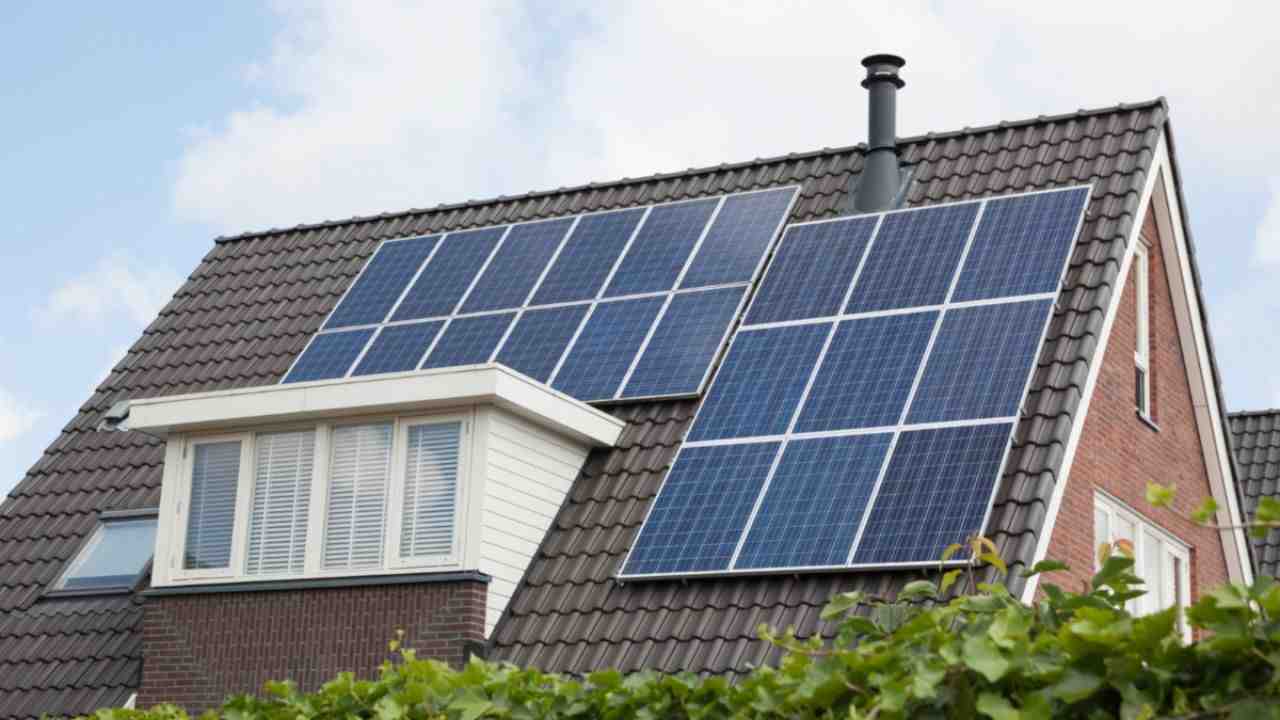“Why would you want to buy anything in California?” Riggins wondered. “And I think that’s the part that really pisses me off. Why would you want to invest in something you’ve never seen before?”
The two-story triplex, with its salmon-colored stucco and white trim, was one of at least 74 properties Southside Neighborhood Stabilization has acquired since its inception in early 2021.
The organization is one of at least three such entities formed in California following the passage of SB 1079 on home purchases in partnership with nonprofit organizations dedicated to providing affordable housing to communities in need. But in a review of nearly 200 real estate records and interviews with over a dozen homeowners and investors who have bought properties from them, there is little evidence that these homes are actually being used as affordable housing.
“They’re all just flipped,” said Jeff Cagle, a central California home fixer who has lost dozens of foreclosure listings to buyers citing SB 1079 housing, but none of them have been retained as affordable housing.”
‘Homes for homeowners, not corporations’
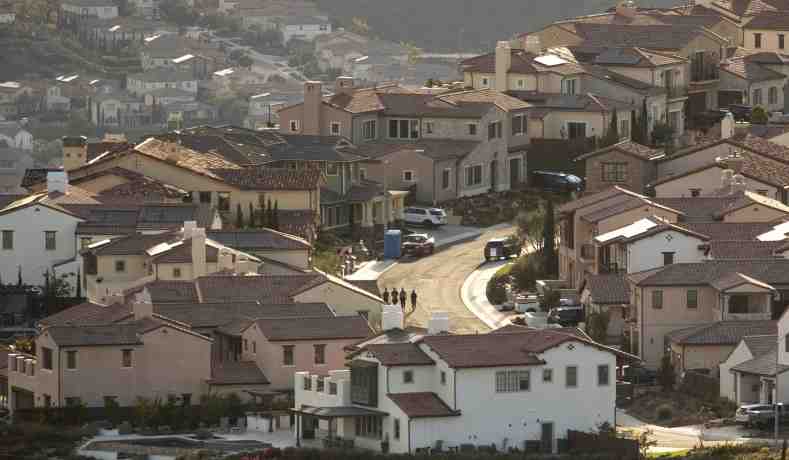
State Senator Nancy Skinner (D-Berkeley) first introduced SB 1079 in February 2020 after a powerful two-month protest caught the nation’s attention.
A group of homeless mothers, called Moms for Housing, had been living in a vacant house in West Oakland in late 2019 and early 2020. The home was owned by Wedgewood, a Redondo Beach real estate firm that specializes in flipping foreclosed homes.
The mothers’ protest aimed to shine a spotlight on increasing corporate ownership of apartments, which they say has led to rising rents and growing homelessness.
And SB 1079 was Skinner’s answer. She called the bill Homes for Homeowners, Not Corporations.
“The intent of SB 1079 was to provide a fair chance for renters, homeowners who may have lost their home to foreclosure, or affordable housing groups to be able to purchase a foreclosure home at auction,” Skinner said.
After the Great Recession foreclosed on millions of homeowners between 2008 and 2010, private equity investors began buying up the foreclosed homes by the thousands. Today, Wall Street-backed companies own more than 200,000 single-family homes across the country.
Skinner’s bill made it illegal to bundle lots at foreclosures to make it easier for individuals to bid on them.
She thought nonprofits would use the homes they bought through SB 1079 to create more affordable housing, but the bill doesn’t specifically mandate that. Nor does it include any enforcement or accountability mechanisms to ensure this is the case.
“We figured we didn’t have to,” Skinner said. “We make a bill with the best of intentions, but we can’t always see exactly how it will translate into practice.”
A new bill, AB 1837, by Assemblymember Mia Bonta (D-Oakland) would require that homes purchased by non-profit organizations be used to house lower-income residents for at least 30 years. The bill is expected to vote in the Senate this week and return to the Assembly for a unanimous vote by the end of the month.
“We want to make sure that a not-for-profit housing developer is actually the recipient of this special opportunity,” Bonta said, “and that it’s not a non-profit organization dressed in some kind of wolf’s clothing.”
An opportunity
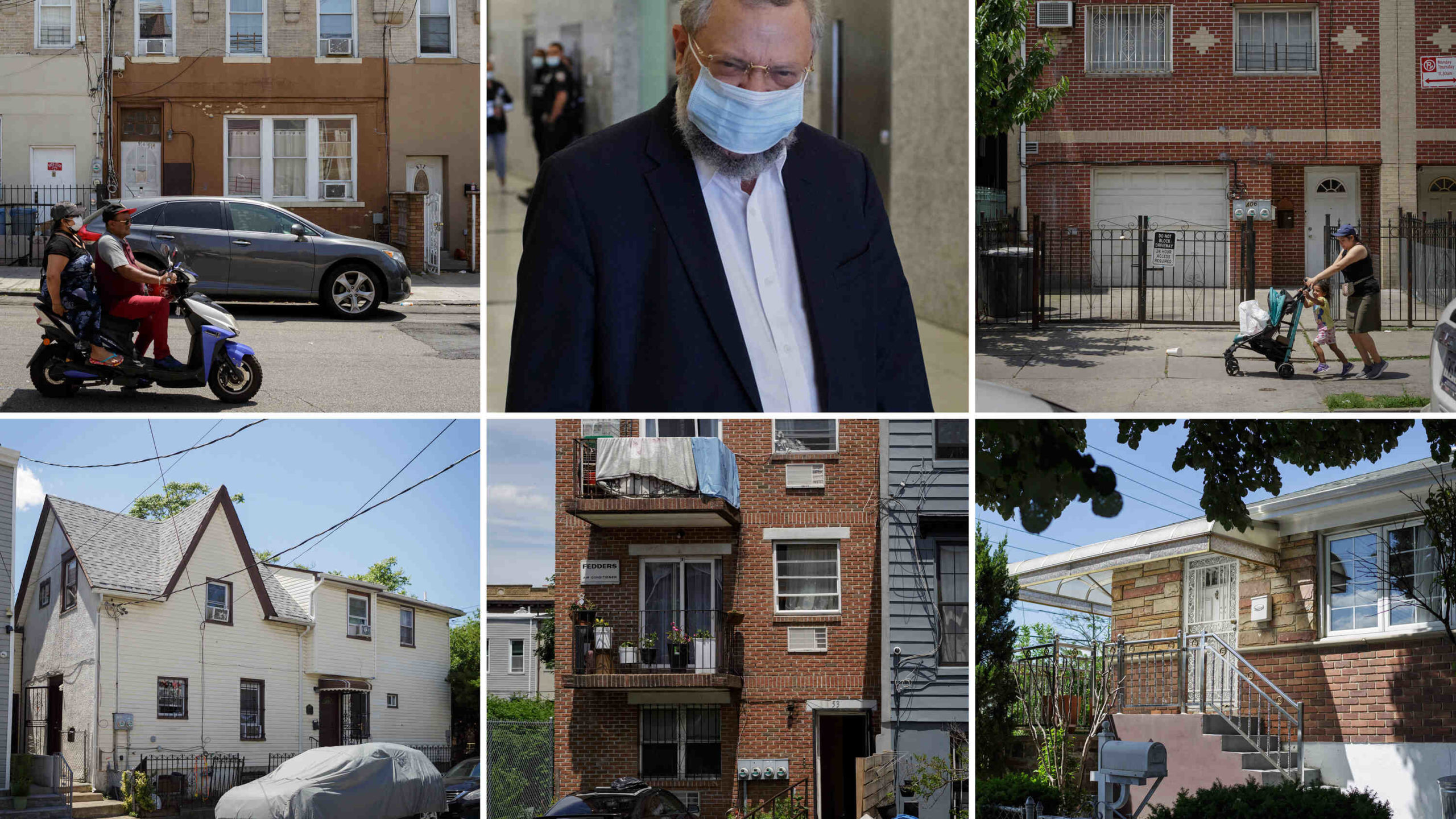
In many ways, the same economic forces that fueled the Moms for Housing protest also prompted a nonprofit in Richmond, Virginia, to get into the business of buying foreclosed homes.
Tim Hayes is the Director of Distressed Assets for this non-profit Southside Community Development and Housing Corporation. He said the Blackwell neighborhood where SCDHC was born is gentrifying, in part due to the organization’s work improving the community. The organization turned to local banks for loans to help buy neighborhood properties and keep people from being overpriced. But the banks would not lend them money.
“As a result, private developers are reaping the benefits of SCDHC’s years of work,” Hayes said.
Then, in 2015, President Barack Obama directed the U.S. Department of Housing and Urban Development to begin selling some of the foreclosed homes to verified nonprofits.
Hayes saw an opportunity. SCDHC could buy the debt of homes going through foreclosure and sell the homes to homeowners instead of allowing investors to buy and rent them. The sale would generate revenue for the nonprofit that could help it expand its affordable housing development work in and around Richmond, Virginia.
“We were frustrated that our community is now being overtaken by developers,” Hayes said. “We go to the bank, they say no. HUD then says, “Hey, maybe you guys can work in this program. We think if you do it right, you can help people, but at the same time make some money to expand, grow and develop your business.’”
SCDHC was certified through HUD’s Distressed Asset Stabilization Program and began purchasing distressed loans for homes that were foreclosed on in 33 states.
They worked with Louis Amaya, the CEO and founder of PEMCO Capital Management, to help them comply with each state’s distressed asset purchase policy.
Amaya did not respond to multiple requests for an interview. But his company’s website describes itself as “an institutional platform for investors to gain exposure to niche sectors within the distressed residential mortgage and real estate markets.”
“There was certain expertise that we just didn’t have,” Hayes said. “We hired PEMCO to be part of the distressed asset sale team.”
Once SB 1079 became effective in 2021, SCDHC formed a limited partnership, Southside Neighborhood Stabilization, with Amaya managing the properties. Hayes said it’s an extension of her ongoing work in California and other states.
The goal, Hayes said, is to help residents stay in their homes, either through refinancing or loan counseling. In cases where a tenant lives in the home, Southside offers cash to help with the move, according to Hayes.
But there’s always a balance, Hayes said. SCDHC is working with private investors to provide the money to purchase the foreclosed homes. Those investors expect a return, he said.
“We’re also trying to align results with returns,” Hayes said. “We strive to do the right thing to give people the ability to stay in their homes.”
‘Where are we going to go?’
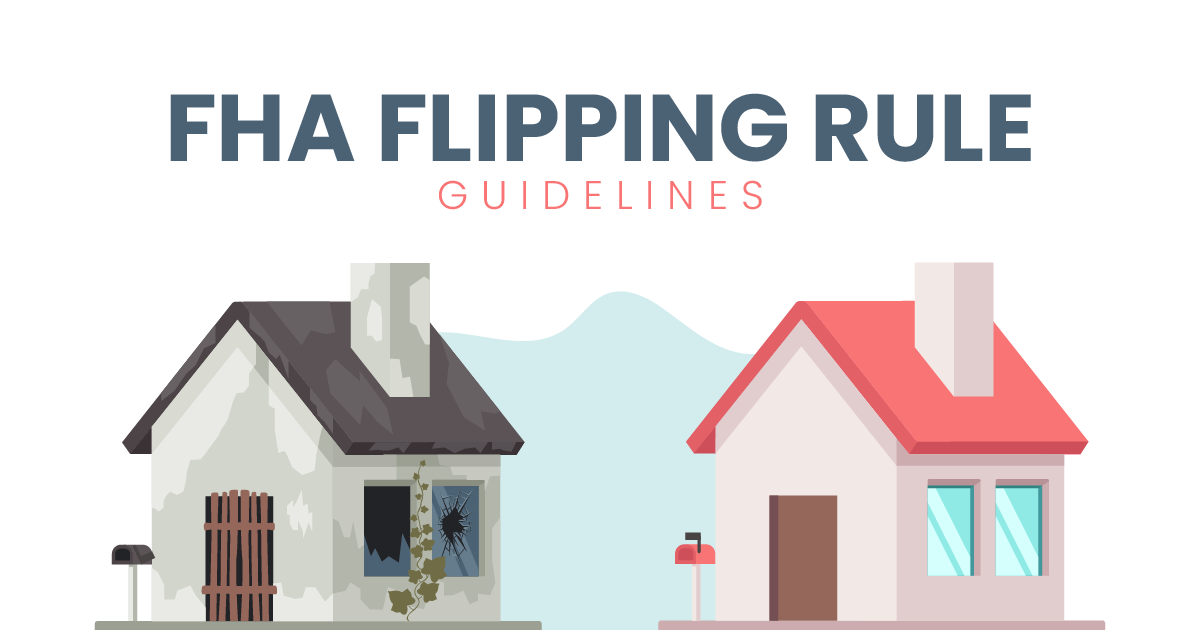
Before Riggins’ mother, Susie Riggins, died in 2003, she said to her son, “Whatever you do, try to keep the building because your father built it,” Riggins said.
“That was all she had to say,” he said. “And that’s what I intend to do.”
For Riggins’ parents, the home was not just a source of rental income; it was an investment in the community. They had moved to Richmond, California, from Arkansas and Louisiana in the mid-1940s as part of the Great Migration, when millions of African Americans migrated from the South to the North and West in search of a safer life.
Riggins’ father, Clinton Riggins, took a job as a steelworker at Hunters Point Naval Shipyard in San Francisco. And despite the lack of traditional mortgages for black residents, Clinton Riggins was able to buy a home in Richmond.
“People didn’t have anything back in the ’30s and ’40s,” Riggins said. “But when (my father) got here, he could do it.”
Riggins said his parents always instructed him to keep rents down and if he needed to raise them, to do so gradually.
“My mom said, ‘Your dad built this to help people, not to make money,’” Riggins said.
It’s one of the reasons why Riggins’ tenants stayed so long and, in some cases, came back.
Cynthia Hernandez moved to the Riggins building with her mother from San Francisco’s Mission District in 2009 when she was just 18 years old. She eventually left as a young adult to live alone, but returned in 2019 when she and her husband moved back in with their mother.
“We were more into buying a home in that area,” Hernandez said, “so we wanted to save a few bucks.”
When the pandemic hit, the apartment next door became vacant, so she and her husband moved in. It was around this time that her relationship with Riggins changed from a typical tenant-landlord relationship to a more intimate one.
“We got a lot closer,” Hernandez said. “We helped each other with groceries, with toilet paper and everything necessary.”
After separating from his wife, Riggins said he worked with the Richmond Neighborhood Housing Services community group to complete mortgage modification forms required by his lender, World Savings Bank.
He couldn’t understand why the company started foreclosure in the middle of this process. Riggins has since hired an attorney who is suing the loan’s administrator, Rushmore Loan Management Services, for alleged violations of the state’s Homeowner Bill of Rights — a set of laws protecting homeowners who face foreclosure.
When the mortgage reminder surfaced, speculators bombarded the home with flyers, letters, and phone calls. So Hernandez sought help — both to understand what was going on and to figure out what rights she had if she was threatened with eviction.
“I freaked out,” Hernandez said. “Where are we going? What can we do?”
Hernandez eventually found Richmond Land, a new community land trust based in Richmond, California looking for his first project.
By this time, Southside had already purchased the property and served eviction papers to residents. Hayes said the company initially offered residents $5,000 but received no response, so they went ahead with the eviction process.
“We have made it clear (Southside) that what has happened is problematic,” said Mia Carbajal, Richmond Land property manager, “and that we are genuinely interested in stopping the eviction by purchasing the building.” “
Southside Neighborhood Stabilization eventually agreed to sell the building to Richmond Land for $600,000 — $59,000 more than the $541,000 paid to purchase it. The amount barely covered Southside’s expenses, Hayes said.
Looking back, Carbajal said she doesn’t blame Southside for wanting a return on the purchase or the practice of buying foreclosed homes as a way to generate revenue for the nonprofit’s Richmond, Virginia-based work.
“I think it really speaks to our nation’s austerity, our divestment in housing,” Carbajal said, “and to organizations that are in the affordable housing business and are doing what they have to do to cover their expenses.” “
In the end, things worked out for Hernandez and Riggins: they were able to stay in their homes and eventually have the option to buy the building. Richmond Land will retain ownership of the land and ensure the property is sold at an affordable price to all future buyers.
But others studying Southside were less than pleased with the results.
Neighborhood stabilization
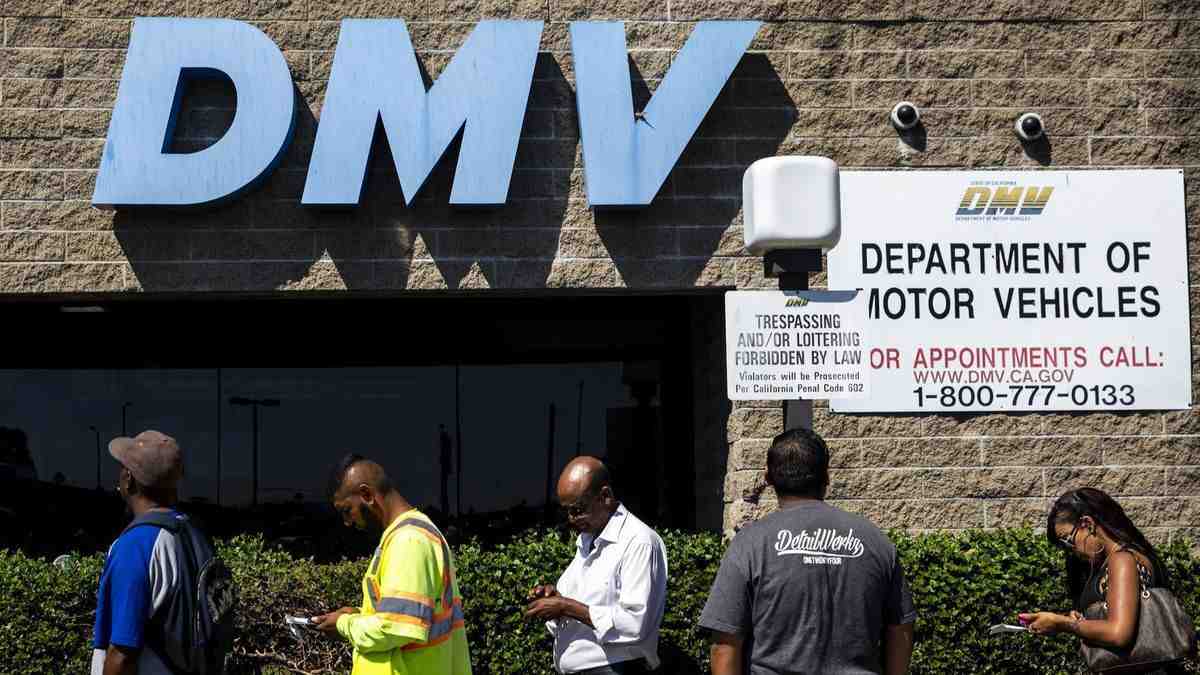
Southside Neighborhood Stabilization has spent nearly $29 million to purchase 74 properties under SB 1079. So far, more than half — 47 — have already sold for a total of about $6 million in gross proceeds, according to property records. Of these, 32 are owner-occupied today. The rest went to investors.
Southside requires its buyers to sign an affidavit confirming that they will either reside in the property or sell it to someone who chooses to do so.
Hayes said that’s because the organization’s goal is to create more homeownership opportunities, which is also a stated goal of SB 1079.
“We see ourselves as a holistic organization, but we also recognize that the majority of wealth creation comes from home ownership,” Hayes said. “And if I can never access home ownership, it limits so many things, not to mention wealth transfer from generations. So that’s the mission we really have.”
But some of the homeowners and investors who have come to know Southside are wondering if their practices actually make it easier for people to afford their homes.
In Thousand Oaks, Steve Boykin paid almost a quarter of a million dollars to Southside Neighborhood Stabilization just to get the deed back for his home.
Boykin, a locksmith and lifelong resident of Thousand Oaks, took out a $150,000 home equity loan in 2007, though he says he only used about $44,000 of it. The loan was sold to another company, who then charged him a higher interest rate. Boykin hired a lawyer to contest the new charges, and in the meantime the bank was foreclosed on.
Southside Neighborhood Stabilization bought the debt on his property for $166,100. Boykin negotiated to pay them $239,000 for the buyback, according to property records.
“I had to pay them, I had no choice,” he said. “They hold (the certificate) over my head. You know, “We’re going to sell your house. We have the title deeds for the house and we can sell it.”
Hayes said Boykin’s case was “an amazing finding”.
“Rather than being evicted, we allowed the owner to stay in his home,” he said. “All processes can be improved. However, it continues to feel like SCDHC is being portrayed as a bad actor, given an incredibly small sample, and we are not.”
But Boykin didn’t see it that way. He sold two lots in Paso Robles where he had planned to build his retirement home to pay for Southside. At 63, he expected to retire in two years. Now he knows that he will work much longer.
“I just feel betrayed by my government,” Boykin said. “You work your whole life. My entire retirement is in my equity, in my house. And these guys come legally and steal it from me.”
Other investors and homeowners who bought homes from Southside said the sales felt like typical flips and questioned what kind of value the nonprofit was adding. The houses often needed major repairs, but they were not sold at a discount.
Lauren Every-Wortman bought a home near Joshua Tree National Park in January for $453,000 — about $100,000 more than the current median price home there, according to Zillow — though it has a new roof and floors, a new one Irrigation system and a new deck needed.
Every-Wortman’s friend dug into the property records and found that Southside had bought the home for $295,000.
“It inflates the market,” Every-Wortman said.
Hayes said the organization is transparent about the terms of the homes it sells.
“We could fix anything,” Hayes said, “but the reality is then the price point changes.”
They also have costs to bear, Hayes said, from realtors to attorneys to closing and filing costs.
By the fall of 2021, Hayes said, Southside has decided to stop buying properties through SB 1079. They’ve received some inquiries about his activities, he said, and they don’t want to proceed “until lawmakers can provide more clarity about what we’re doing.” have done.”
“We were getting more and more requests trying to give us a certain picture,” Hayes said. “And in Tim Hayes terminology, we say, ‘Fuck it. We’ve suddenly done too much to be backed into a corner.’”
According to ownership records, Southside’s last two purchases in California were made on Jan. 4. But while Southside began to close down, other nonprofits were just getting started.
Corporations clothed as nonprofits
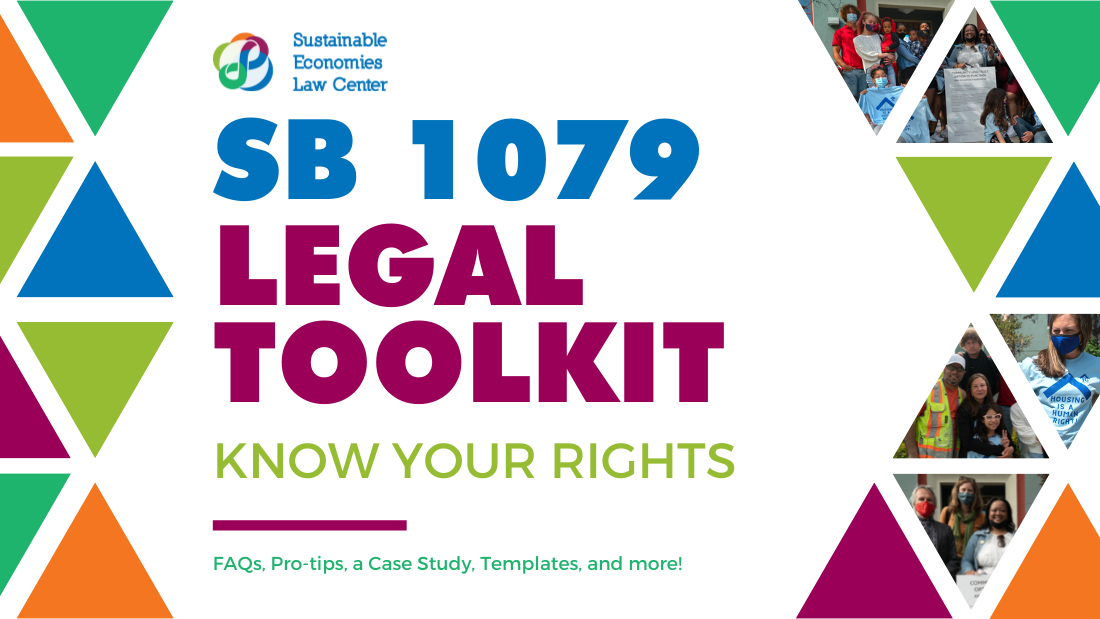
In the summer of 2021, two California-based house-flipping companies formed their own affordable housing nonprofits and began using SB 1079 to purchase and trade foreclosed homes, according to public records.
One of the groups, the CV Neighborhood Stabilization Foundation, says its mission is to “create and implement programs for the development and maintenance of affordable housing.”
The foundation later changed its name to the Dove Street Housing Foundation and formed a number of different limited partnerships that collectively bought at least 68 properties since November. According to property records, at least 12 of them used SB 1079. Dove Street’s nonprofit status allows the partnerships to use SB 1079 to match foreclosure bids.
The Foundation’s President, Matt Regan, is also the Co-Founder, President and COO of ClearVue Real Estate Services LLC, which, according to its website, “specializes in the acquisition, management and disposition of REO (Real Estate Owned) properties, residential and targeted whole loans across the country.” Regan did not respond to requests for comment.
Of the 34 properties that Dove Street has already sold, 25 have gone to other investors, according to property records.
One such investor was Gerry Ochoa, a small landlord who bought property in Bakersfield from one of Dove Street’s limited partnerships. A fire had burned out the two prefabricated houses on the property.
He reckons he will spend more than $380,000 to demolish the houses and put up a five-unit building in their place, which he plans to market as luxury units.
“I speak more to these young people who work at home these days,” Ochoa said.
In Tulare, William Rawls had just gotten divorced when he was looking for a new home earlier this year. He bought a beige, one-story house from RMMC LP in March.
Rawls was surprised to learn that RMMC is a limited partnership with a nonprofit affordable housing organization called Affordable Housing NFP Inc. listed as the general partner, and property records show they used SB 1079 to purchase the home.
“They just smeared lipstick on a pig,” Rawls said, adding that he was in the process of replacing all the floors that had grown mold from leaking pipes. “That was gut work”
RMMC LP was incorporated in July 2021 and purchased its first property in November. To date it has purchased at least 56 mostly single-family homes, and property records show that at least 22 of the purchases were SB 1079 purchases.
The president of the nonprofit, Armando Banuelos, is also the CEO of the Capitol Real Estate Group. At a recent meeting in Bakersfield, Banuelos was described as a specialist in “fix-n-flip, rentals” and other real estate businesses.
Banuelos and other company officials did not respond to requests for comment.
On the front yard of Rawls’ later home, Capitol had put up signs directing buyers to their business. Rawls said there was never any mention of using the houses as affordable housing.
“If it’s supposed to be affordable housing, they lied,” Rawls said. “What a farce.”
Closing the loophole
Under Bonta’s new bill, AB 1837, property purchased by non-profit organizations under SB 1079 would be subject to deed restrictions requiring the housing to remain affordable for at least 30 years. And nonprofits would need to have board members with California addresses.
Several people working in the house-flipping industry said the changes would help fill the loophole in SB 1079, but the new legislation may not go as far as the author intends.
Foreclosures are usually cash purchases. And foreclosure owners or renters are unlikely to have hundreds of thousands of dollars to compete with.
“The idea of regular people just using (using) that,” said Jeff Cagle, the central California house pinball player, “isn’t going to happen.”
Nonprofits may have a better chance of matching the auction prices, and last year the Legislature approved a $500 million revolving fund called the Foreclosure Intervention Housing Preservation Program to help them do this. These funds should be available later this year.
But even with that fund, Hayes says few nonprofits have the capacity to operate at scale, which is why he thinks partnering with private investors is so effective.
“We’re just concerned that along the way it’ll lead to some unique results that won’t really impact all nonprofits. It can tie a piece of nonprofit together,” he said, adding that the vast majority of foreclosed homes are being bought by “the same people who have always done it.”
For Bonta, however, the goal of her legislation is more narrowly focused on reforming SB 1079 and ensuring that when nonprofits buy the homes, they use them as affordable housing for low-income residents.
“We try to ensure that the intent of our legislation is consistent with actual implementation,” she said.
Yes. If you want to sell your home quickly and there is unauthorized work in the history of the property, this must be disclosed. If not, you make many states vulnerable to a potential fraud report from the new owners.
How much is an Adu in San Francisco?
Many San Francisco single-family and multi-family homes can now add units. You can use the space for family members or rent it out for extra income. This process can take more than 18 months after you decide to build. Adding a unit typically costs more than $125,000 in materials and labor.
How tall can Adu be in San Francisco? Number of allowed ADUs. The maximum number of ADUs allowed is as follows: Conversion ADU: 1 ADU may convert an existing space or up to 25% of the existing number of units, whichever is greater. Detached ADU: 2 ADUs are allowed.
Can I build an ADU on my property San Francisco?
Single Family Homes: Property owners have the right to build an ADU of at least 800 square feet with a height limit of 16 feet and 4 feet of side and backyard setbacks. Property owners can also build a JADU (Junior Accessory Dwelling Unit) within the existing building envelope or an outbuilding.
Can I build an ADU on my property in California?
Yes. ADUs are permitted within a historic district and on properties where the primary residence is a listed building. The state ADU law allows a local agency to institute standards that prevent adverse effects on properties listed on the California Register of Historic Resources.
Can I build an ADU in San Francisco?
In 2016, San Francisco’s Accessory Dwelling Unit Program became available citywide for all zoning districts that allow residential use. As of January 2020, California introduced new laws governing ADUs statewide, allowing ADUs to be added in single and multi-family buildings.
How much is an Adu in the Bay Area?
In the Bay Area, you can expect a 650-square-foot ADU to cost an average of about $350,000 to build, while a 350-square-foot ADU will likely cost about $225,000 to construct. Of course, your cost can be more or less depending on what you want for your side home.
Is Adu a good investment in Bay Area?
A 2021 Porch survey found that in the US Pacific region, homes with ADUs experienced an average 35% increase in resale value over homes without ADUs. As a long-term investment, a place to live for you and your family, and a potential source of residual income, ADUs are hard to beat!
What is the average cost of an ADU in California?
The average statewide construction cost for an ADU is $150,000 or $250/sqft. A significant portion of ADUs (37%) cost less than $100,000 to manufacture, and 71% of ADUs cost less than $200,000 to manufacture.
What is the average cost of an ADU in California?
The average statewide construction cost for an ADU is $150,000 or $250/sqft. A significant portion of ADUs (37%) cost less than $100,000 to manufacture, and 71% of ADUs cost less than $200,000 to manufacture.
Is it worth it to build an ADU in California?
Ratings may vary depending on whether the ADU is being viewed as additional living space or as a rental property. But overall, a California ADU can realistically add $200,000 to $500,000 to the value of your property. And with retail ADUs costing around $200,000, that’s an incredible return on your investment.
How much does an ADU permit cost in California?
According to McClaren, ADU applicants pay $2,000 to the planning department based on staff time needed to evaluate the application. An additional fee will then be charged for the building permit. He estimates the total cost of the two fees to be between $10,000 and $11,000.
How much does it cost to build an in law unit in California?
The construction costs: While the construction costs depend on the design of the house and the quality of the building materials, you can expect to average between $100 and $200 per square foot. If you are given a 500 square foot ADU floor plan, you can expect a construction cost of around $50,000 to $100,000.
How much does it cost to build a casita in California? Accessory dwelling units (ADUs) — the technical term for a casita — typically cost between $100 and $500 per square foot. This means that the cost of building a casita can range from around $40,000 for a compact cabin to over $500,000 for a miniature suite.
How much does it cost to build an inlaw suite in California?
Ideally, your in-laws suite should include everything you need for independent living, such as a separate bedroom, living area, bathroom and kitchen. Of course, adding all of these items is expensive, with one finance expert putting the installation cost anywhere from $40,000 to $125,000.
How much does it cost to build an extra room in California?
A typical room-only family room ranges from $75,000 to $95,000. With design and quality materials, prices can easily go up to $150,000 and up.
How many square feet is a typical mother in-law suite?
The typical mother-in-law suite is about 600 square meters and has a living room, a bedroom, a kitchen and a bathroom. However, mother-in-law suites come in all shapes and sizes, and some can be much larger.
How much does it cost to build an ADU in California?
How much does an ADU cost in California? Overall, the cost of an ADU can range from $100,000 to more than $300,000 depending on how they are designed and equipped. Most modestly equipped ADUs in California cost around $200,000. ADUs have the same amenities as single-family homes but cost significantly less.
Can you build an ADU yourself in California?
Yes, you absolutely can build your own ADU. DIY is a great way to keep your project costs down. We can draw up the necessary plans and help you obtain the necessary building permits.
Is it worth it to build an ADU in California?
Ratings may vary depending on whether the ADU is being viewed as additional living space or as a rental property. But overall, a California ADU can realistically add $200,000 to $500,000 to the value of your property. And with retail ADUs costing around $200,000, that’s an incredible return on your investment.
Do I need a permit to build an ADU in California?
Code, § 65852.2, subd. (a)(6)). Prohibits a local authority from specifying a maximum size of an ADU less than 850 square feet or 1,000 square feet if the ADU contains more than one bedroom and requires approval of a permit to build an ADU up to 800 square feet (Gov. Code, § 65852.2, Subd.
Can I build my own Adu in California?
California passed new laws in 2019, 2020 and 2021 making building an additional home a fantastic option for any homeowner. If you’re looking to build an ADU in your backyard, it’s important to understand what to expect before you begin construction, including upfront and long-term costs.
What are the requirements for an ADU in California?
A statewide exemption ADU is an ADU of up to 800 square feet, 16 feet in height as may be limited by a local authority, and with 4 feet of side and backyard setbacks. The ADU Act requires that no lot coverage, floor area ratio, open space, or minimum lot size preclude the construction of a statewide exemption ADU.
Do you need a permit for Adu in Los Angeles?
Do you need a permit? In Los Angeles area cities and unincorporated Los Angeles County, homeowners must obtain plans for the project from their local building and safety department. For the foundation, this means that diagrams and accurate measurements must be included.
How long does it take to get an ADU permit in Los Angeles? According to our designers, most ADU permits are issued within four to six months. If you live in an unincorporated area of Los Angeles, your jurisdiction is Los Angeles County and your permit will be issued by their Public Works Department.
How much is a permit for an ADU in Los Angeles?
How much do the permits cost? ADU permits typically cost between $1,800 and $8,000 in Los Angeles. These costs will vary greatly from project to project and will be determined by the estimated value of the construction work being performed and the number of square feet your project will add to the property.
How much does it cost to permit an ADU in California?
Permitting Your ADU Depending on your location, you may need both zoning and building permits. Building permits can range from $25 to $4,000 and building permits from $450 to $15,000.
How much does a building permit cost in Los Angeles?
Average cost of building permits. The average cost of a building permit is $1,200 as set by national guidelines.
What are the requirements for Adu in Los Angeles?
ADU Interior Space Requirements The living room/bedroom must be at least 70 square feet. The kitchen (along with the hallways and closet) must be 50 square meters. The bathroom must be at least 30 square meters and contain a toilet, a sink and a shower stall or bath.
Can I build an ADU on my property Los Angeles?
An ADU is permissible if a legal single-family or multi-family dwelling exists on the property, or a single-family home is to be built concurrently with the ADU.
What qualifies as an Adu in Los Angeles?
An Accessory Dwelling Unit (ADU) is defined in Los Angeles Municipal Code (âLAMCâ) Section 12.03 as: An attached or detached dwelling unit that provides fully self-contained living accommodation for one or more persons and relates to much with an intended or existing primary residence.
How big can I build an ADU in Los Angeles?
Size Requirements State law limits the size of an ADU connected to the main home to a maximum of 1,200 square feet or one-half the size of the existing residence, whichever is smaller. Freestanding units must be no larger than 1,200 square feet.
Can you build a 2 story Adu in California?
In short, yes, an ADU can be two-story in many communities in the greater San Diego area! While California state law does not require local jurisdictions to allow two-story ADUs, many cities—including San Diego, Oceanside, Chula Vista, El Cajon, Encinitas, Escondido—allow ADUs to be two-story.
What is the maximum size of an ADU in California?
In the absence of local restrictions, California state law limits ADU size to 1,200 square feet. But even with local restrictions, local jurisdictions must allow up to 850 square feet.
What makes a basement illegal in NYC?
Basements and basements in residential buildings of any size should NEVER be lawfully rented or occupied unless conditions meet minimum requirements for light, air, sanitation and egress and have been approved by the Department of Building (DOB).
What is the highest paying police job? The chief of police is the top position in civilian law enforcement. The police chief has the highest-paying job in law enforcement for the civilian sector, earning between $96,000 and $160,000 per year (in salary). Directly below the chief is the Deputy Chief of Police, with an annual salary of up to $138,000 (in salary).
How much does a rookie cop make in NYC?
Industry and Salary Information The starting salary for a rookie police officer in the NYPD is $42,500. Additional benefits include unlimited paid sick leave, medical benefits and a retirement plan. Opportunities for overtime, night pay, and vacation pay mean an inexperienced officer can earn significantly more.
What does a New York police officer earn?
Base Salary: $104,040. After 4 years you can apply for the rank of Sergeant in the promotion process. Base Salary: $115,844.
What city pays cops the most?
SAN FRANCISCO — With an annual salary of over $300,000, San Francisco Police Chief Greg Suhr is the highest-paid police officer in the nation, according to the city’s payroll.
What is the average salary of a NYPD officer?
The starting salary for a firefighter is $45,196. But you can get extra compensation with overtime and vacation pay, which are often demanded. After five years, a firefighter can earn more than $100,000, including overtime and vacation pay.
Who is the highest paid cop in America?
SAN FRANCISCO — With an annual salary of over $300,000, San Francisco Police Chief Greg Suhr is the highest-paid police officer in the country, according to city payrolls.
Which state troopers get paid the most?
| rank | Federal State | hourly rate |
|---|---|---|
| 1 | Alaska | $28.81 |
| 2 | North Dakota | $26.10 |
| 3 | Washington | $26.11 |
| 4 | Illinois | $25.32 |
What city do cops get paid the most?
01. California A law enforcement officer earns an average salary of $93,550 (52.7% more than the national average). Police officers in Sunnyvale, Santa Clara and San Jose make $114,520 a year.

